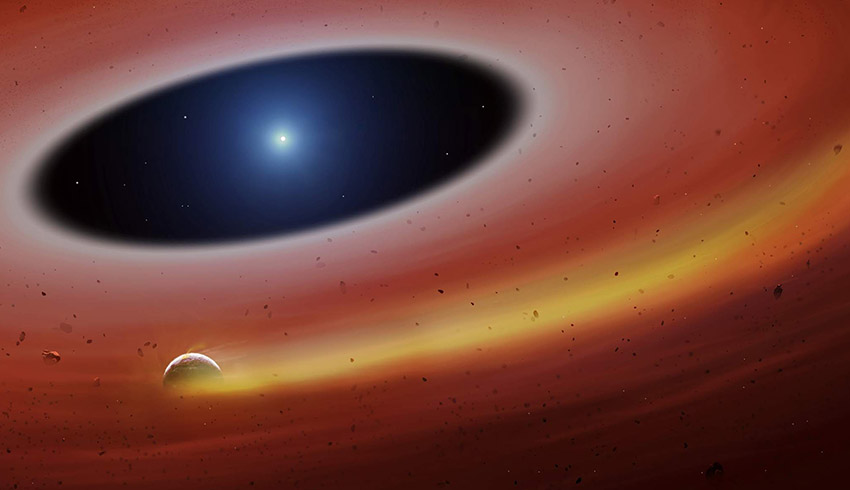A fragment of a planet that survived the death of its star has been discovered by University of Warwick astronomers in a disc of debris formed from destroyed planets, which the star ultimately consumes.
The iron and nickel rich planetesimal survived a system-wide cataclysm that followed the death of its host star, SDSS J122859.93+104032.9. Believed to have once been part of a larger planet, its survival is all the more astonishing as it orbits closer to its star than previously thought possible, going around it once every two hours.
Lead author Dr Christopher Manser, a research fellow in the University of Warwick Department of Physics, said, "The star would have originally been about two solar masses, but now the white dwarf is only 70 per cent of the mass of our sun. It is also very small – roughly the size of the Earth – and this makes the star, and in general all white dwarfs, extremely dense."
Using the Gran Telescopio Canarias in La Palma, the scientists studied a debris disc orbiting a white dwarf 410 light years away, formed by the disruption of rocky bodies composed of elements such as iron, magnesium, silicon, and oxygen – the four key building blocks of the Earth and most rocky bodies.
Within that disc they discovered a ring of gas streaming from a solid body, like a comet’s tail. This gas could either be generated by the body itself or by evaporating dust as it collides with small debris within the disc.
White dwarfs are the remains of stars like our sun that have burnt all their fuel and shed their outer layers, leaving behind a dense core that slowly cools over time. This particular star has shrunk so dramatically that the planetesimal orbits within its sun’s original radius. Evidence suggests that it was once part of a larger body further out in its solar system and is likely to have been a planet torn apart as the star began its cooling process.
Professor Boris Gaensicke, co-author from the Department of Physics, added, "The planetesimal we have discovered is deep into the gravitational well of the white dwarf, much closer to it than we would expect to find anything still alive. That is only possible because it must be very dense and/or very likely to have internal strength that holds it together, so we propose that it is composed largely of iron and nickel."
The discovery offers a hint as to what planets may reside in other solar systems, and a glimpse into the future of our own solar system when the sun dies.
"As stars age they grow into red giants, which ‘clean out’ much of the inner part of their planetary system. In our solar system, the sun will expand up to where the Earth currently orbits, and will wipe out Earth, Mercury and Venus. Mars and beyond will survive and will move further out," Dr Manser explained.

